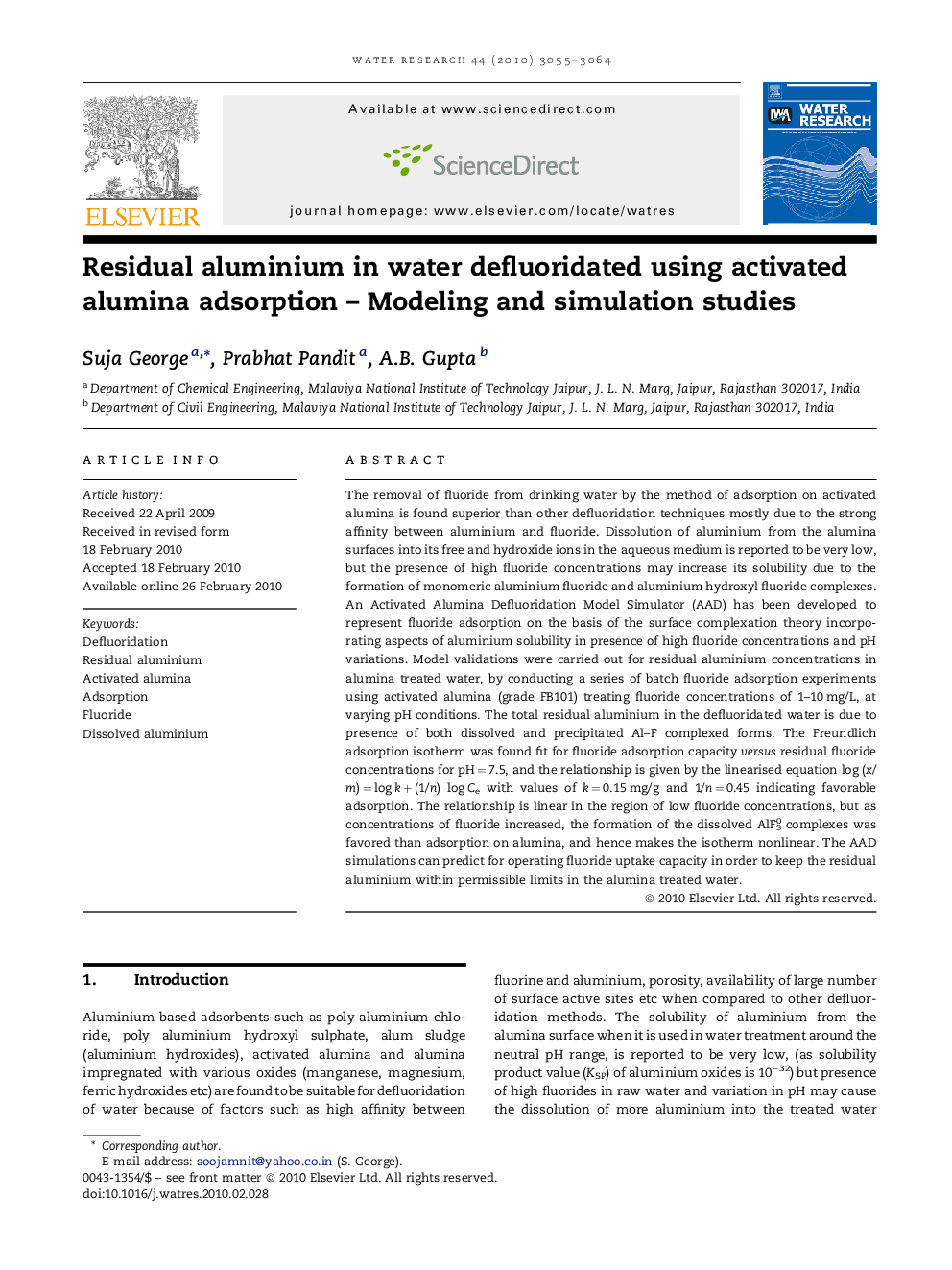| کد مقاله | کد نشریه | سال انتشار | مقاله انگلیسی | نسخه تمام متن |
|---|---|---|---|---|
| 4485078 | 1316940 | 2010 | 10 صفحه PDF | دانلود رایگان |

The removal of fluoride from drinking water by the method of adsorption on activated alumina is found superior than other defluoridation techniques mostly due to the strong affinity between aluminium and fluoride. Dissolution of aluminium from the alumina surfaces into its free and hydroxide ions in the aqueous medium is reported to be very low, but the presence of high fluoride concentrations may increase its solubility due to the formation of monomeric aluminium fluoride and aluminium hydroxyl fluoride complexes. An Activated Alumina Defluoridation Model Simulator (AAD) has been developed to represent fluoride adsorption on the basis of the surface complexation theory incorporating aspects of aluminium solubility in presence of high fluoride concentrations and pH variations. Model validations were carried out for residual aluminium concentrations in alumina treated water, by conducting a series of batch fluoride adsorption experiments using activated alumina (grade FB101) treating fluoride concentrations of 1–10 mg/L, at varying pH conditions. The total residual aluminium in the defluoridated water is due to presence of both dissolved and precipitated Al–F complexed forms. The Freundlich adsorption isotherm was found fit for fluoride adsorption capacity versus residual fluoride concentrations for pH = 7.5, and the relationship is given by the linearised equation log (x/m) = log k + (1/n) log Ce with values of k = 0.15 mg/g and 1/n = 0.45 indicating favorable adsorption. The relationship is linear in the region of low fluoride concentrations, but as concentrations of fluoride increased, the formation of the dissolved AlF30 complexes was favored than adsorption on alumina, and hence makes the isotherm nonlinear. The AAD simulations can predict for operating fluoride uptake capacity in order to keep the residual aluminium within permissible limits in the alumina treated water.
Journal: Water Research - Volume 44, Issue 10, May 2010, Pages 3055–3064